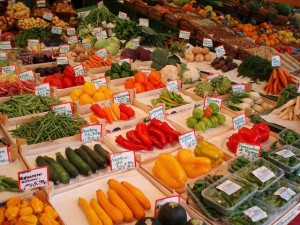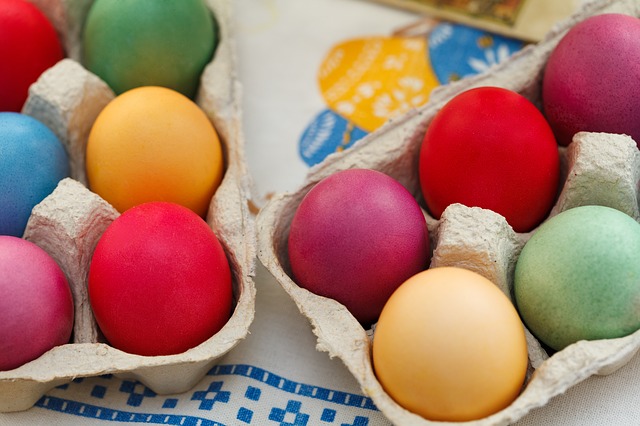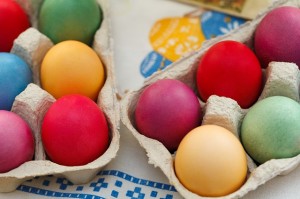We recently had a customer email us and ask about dyeing eggs with natural dyes! It’s a great question, and one we get every spring. Here’s our official stance:
We hesitate to tell people they can use any of our dyes on food because if we do, someone will go overboard on it and try dyeing their eggs with indigo (for instance). You don’t want to do that, as the dye is activated with thiourea dioxide. Probably not all that healthy. So much as we’d love to sell you dyes for eggs, it is not a good idea.
If a natural dye does NOT use any chemicals except alum, it is probably safe to use. However, some dyes will impart a taste or smell to the food, even to eggs. And if the egg is cracked, the dye will seep into the white of the egg. One kid who saw just onion skin leakage onto the whites said it reminded him of Gollum’s head.
Another reason we won’t say our dyes just might be edible in any way is that most of them are from overseas, a lot from third world countries. We cannot guarantee how these plants were grown, who picked and packed them, or how many other grimy hands they went through.

Safe natural dyes would be colors you can buy at the supermarket. If you have children, they will be fascinated by helping you shop for fruits and veggies that can give color. Here are a few of them:
- Spinach or any other dark green veggie (blend them with a bit of
- water)
- Any berries
- Grated carrots
- Cooked red cabbage
- Onion skins
- Any fruits that leave a stain on your clothes
- Asparagus and artichokes give a light olive green – Cook them for dinner, use the cooking water (it won’t look as if it will give you any color)
Experiment!
With the red cabbage, you can change the color or create designs. Dissolve a teaspoon of baking soda in water (use a saucer or small shallow bowl) and in another bowl, put a tablespoon on vinegar. Dye the egg, and dry it. Then dip your fingertips in one of the solutions and touch the egg. That spot will change color. The baking soda will make a blue-green spot. The vinegar will make a bright red-purple spot. Everyone loves watching this happen!
Remember that the longer you let the egg stay in the dye, the deeper the color will be. Hope this helps!
All that aside, if you don’t eat the eggs or empty the shells first, you can absolutely use our dyes and even pigments to decorate the egg shells!
(Public domain images from pixabay.com)

